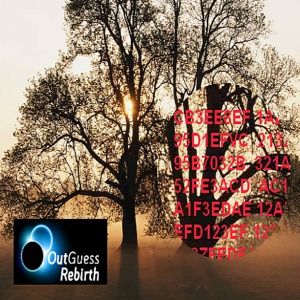


In steganography, the confidential data is embedded in a camouflage file in such a way that no one but the sender and recipient can suspect the existence of confidential information in it. But today we are going to talk about another method, namely steganography, which makes it possible to hide the existence of secret data in order to keep communications private. However, one way to achieve this is through encryption. Sometimes we have to hide our data to protect it from third-party access to the system.
Outguess 1.0 linux code#
In November 2018, Debian developer Joao Eriberto Mota Filho imported the source code into a new repository on GitHub to continue development, and since then released some new minor versions that include bug fixes from several people. After its last version 1.3 from September 28, 2015, it was also abandoned and in 2018 its website went offline. Ī fork called OutGuess Rebirth ( OGR) was released in 2013 by Laurent Perch, with some bug fixes and a graphical user interface for Windows. OutGuess was abandoned and the official website was shut down in September 2015. It gained popularity after being used in the first puzzle published by Cicada 3301 in 2012. It was broken by an attack published in 2002 that uses statistics based on discontinuities across the JPEG block boundaries (blockiness) of the decoded image and can estimate the lengths of messages embedded by OutGuess. He released it in February 2001 in OutGuess version 0.2, which is not backward compatible to older versions. In response, Provos implemented a method that exactly preserves the DCT histogram on which this attack is based. In 1999, Andreas Westfeld published the statistical chi-square attack, which can detect common methods for steganographically hiding messages in LSBs of quantized JPEG coefficients. OutGuess was originally developed in Germany in 1999 by Niels Provos. Īlso, data embedded in JPEG frequency coefficients has poor robustness and does not withstand JPEG reencoding. This technique is criticized because it actually facilitates detection by further disturbing other statistics. Subsequently, corrections are made to the coefficients to make the global histogram of discrete cosine transform (DCT) coefficients match that of the decoy image, counteracting detection by the chi-square attack that is based on the analysis of first-order statistics. OutGuess determines bits in the decoy data that it considers most expendable and then distributes secret bits based on a shared secret in a pseudorandom pattern across these redundant bits, flipping some of them according to the secret data.įor JPEG images, OutGuess recompresses the image to a user-selected quality level and then embeds secret bits into the least significant bits (LSB) of the quantized coefficients while skipping zeros and ones.
Outguess 1.0 linux software#
It has been tested on a variety of Unix-like operating systems and is included in the standard software repositories of the popular Linux distributions Debian and Arch Linux (via user repository) and their derivatives.Īn algorithm estimates the capacity for hidden data without the distortions of the decoy data becoming apparent.
Outguess 1.0 linux free#
It is written in C and published as Free Software under the terms of the old BSD license.

It has handlers for image files in the common Netpbm and JPEG formats, so it can, for example, specifically alter the frequency coefficients of JPEG files. OutGuess is a steganographic software for hiding data in the most redundant content data bits of existing (media) files. com /resurrecting-open-source-projects /outguess.


 0 kommentar(er)
0 kommentar(er)
